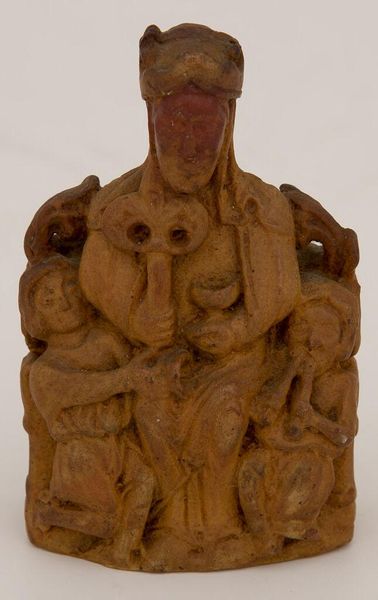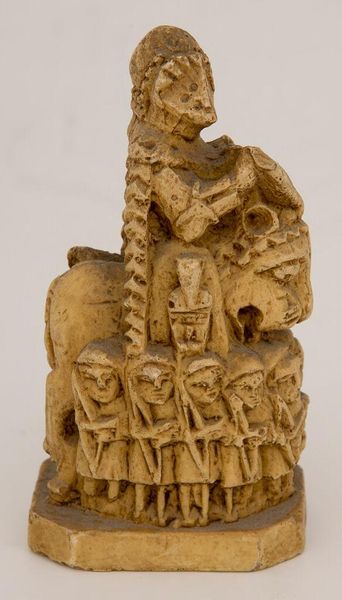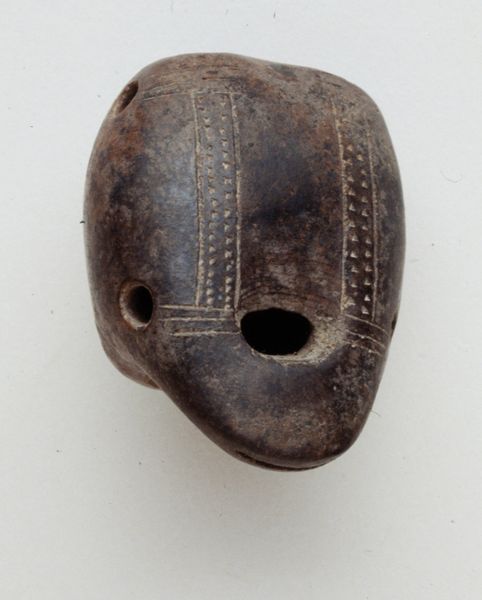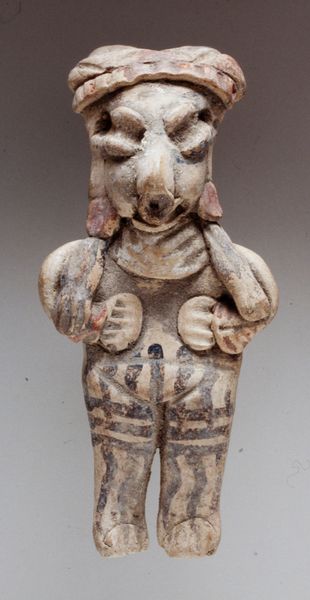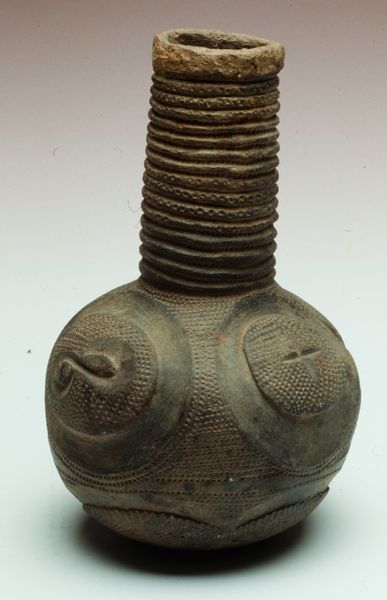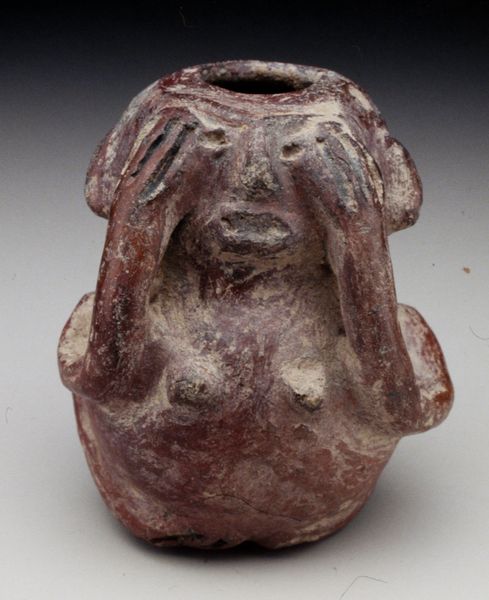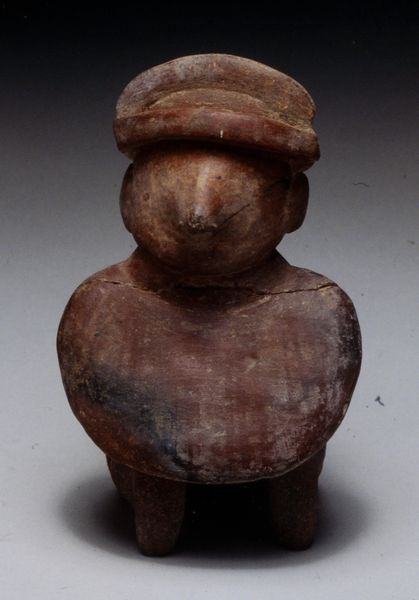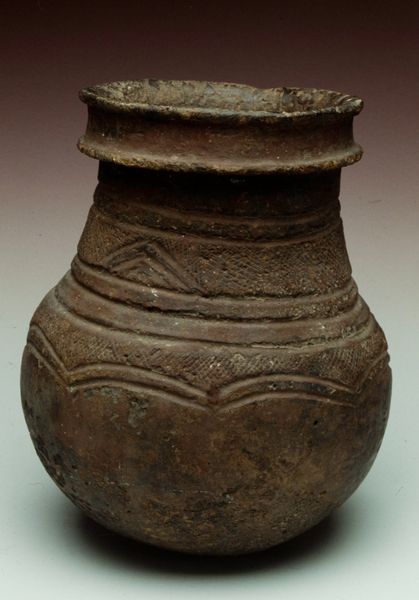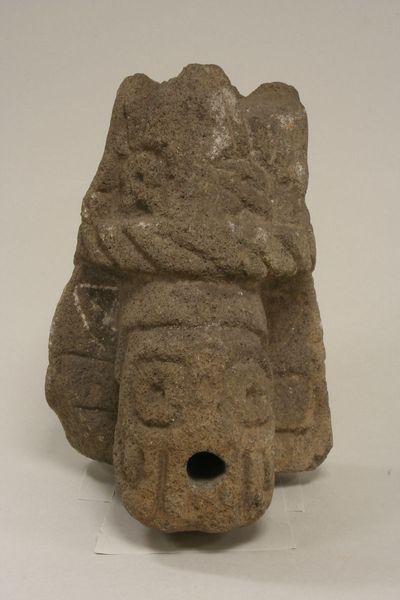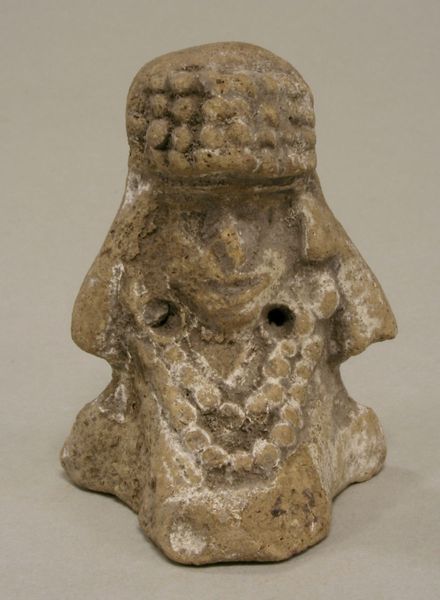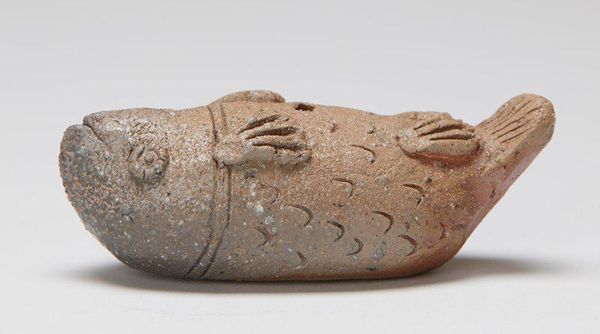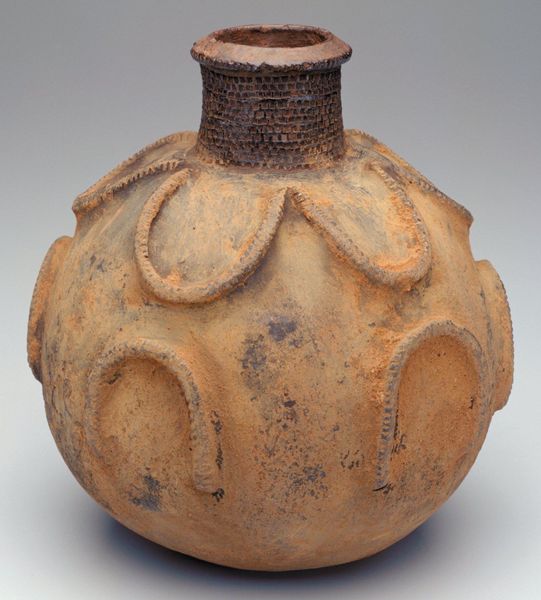
Dimensions: sight: 10.8 cm (4 1/4 in.)
Copyright: CC0 1.0
Curator: This piece, known as "Chess Man," resides here at the Harvard Art Museums, crafted by an unidentified maker. It's quite small, only about 10 centimeters in height. What's your take on it? Editor: Immediately, I’m struck by its weathered appearance, almost primal. It feels like a commentary on the power structures inherent in games, perhaps even warfare. Curator: Indeed. Considering chess's historical roots in strategic warfare, this resonates deeply. The depiction of figures within what appears to be a fortification certainly prompts reflection on social hierarchy and control. Editor: Absolutely. I'm also drawn to the piece's anonymity. The fact that the artist is unknown encourages us to consider the broader societal context that produced this object. Who were these figures? What power dynamics are at play? Curator: And we have to remember that objects like this often served multiple purposes—demonstrating status, reinforcing social norms, and even providing a form of entertainment. It reflects a complex interplay of power and leisure. Editor: Ultimately, this piece provokes us to question the ways in which games, and art itself, can both reflect and shape our understanding of power and identity. Curator: A poignant point—one that leaves us pondering the enduring relevance of art in shaping our perceptions of history.
Comments
No comments
Be the first to comment and join the conversation on the ultimate creative platform.
